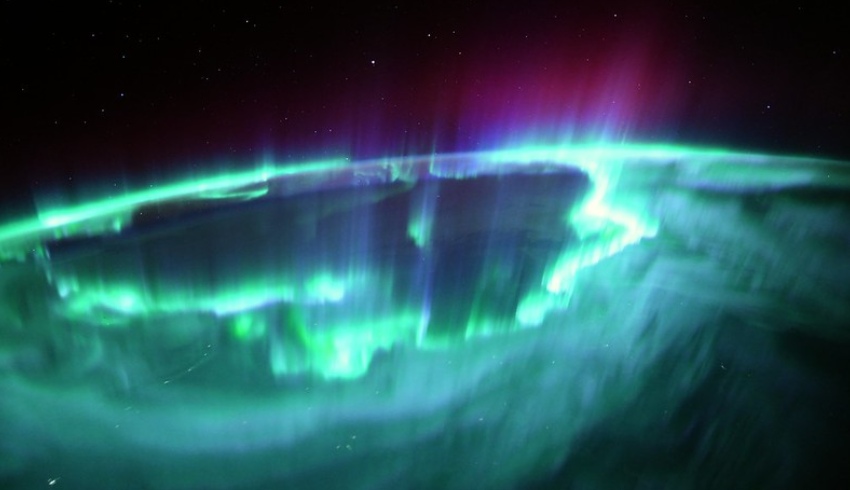Experts say Earth is likely to see many more in the coming years due to an increase in sun activity.
“We were treated to the strongest auroras of the entire mission, over north America and Canada,” said European Space Agency astronaut Thomas Pesquet, who has now left the ISS after 199 days in orbit.

“Amazing spikes higher than our orbit, and we flew right above the centre of the ring, rapid waves and pulses all over,” he said.
Megan McArthur, a NASA astronaut who has now departed from the ISS posted on twitter over the weekend: “Getting ready to come home and these last few nights of aurora viewing from @Space_Station have felt like a gift.”
“Hopefully some of you are enjoying the view from the other side too!” McArthur added.

According to NASA, auroras – also known as the northern lights and southern lights – occur from elements of space weather interacting with the Earth.
“The sun continuously produces a solar wind, made of charged particles that flows outward into the solar system,” says NASA.
Just last week, Earth was hit with a major geomagnetic storm, resulting from a series of outbursts from the sun only days earlier, which caused the auroras to appear.
The sun is currently more active due to its 11-year cycle where its magnetic field changes polarity – essentially, its inner magnetic dynamo reorganises itself, NASA says.
From the increased activity comes an emergence of sunspots – areas on the sun that appear darker – which can erupt and send explosions of energy, known as solar winds, toward Earth.
“When the solar wind reaches Earth’s magnetic field, it can cause magnetic reconnection, an explosive process that allows charged particles from space to accelerate into the atmosphere,” NASA says.
According to Bill Murtagh, program coordinator at the National Oceanic and Atmospheric Administration's Space Weather Prediction Center, we are coming to the beginning of a busy season of sunspots from 2023 to 2028.
"The last several years really we've had very little activity, as is the case during solar minimum, but now we're ramping up and ramping up quite fast into the next solar cycle maximum,” Murtagh told Space.com
"We're seeing the increase in activity that one would expect with this rise in the solar cycle," Murtagh added. "This is kind of our awakening phase."

Isabella Richards
Bella Richards is a journalist who has written for several local newspapers, her university newspaper and a tech magazine, and completed her Bachelor of Communications (Journalism) at the University of Technology Sydney in 2020. She joined Momentum Media in 2021, and has since written breaking news stories across Space Connect, Australian Aviation and World of Aviation.
You can email Bella on: [email protected]

